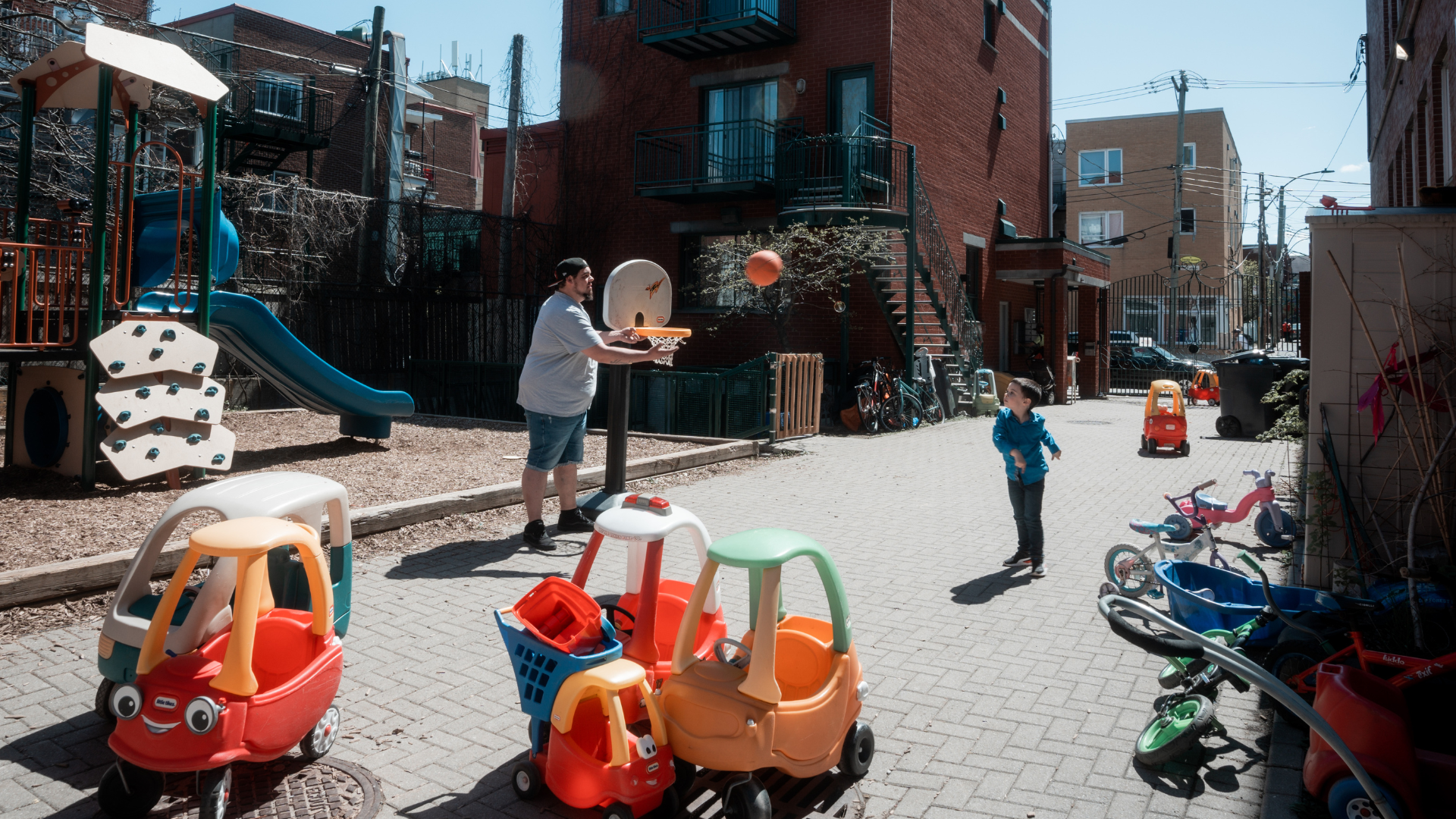💚 On Giving Tuesday, your donation will be doubled. ➜ DONATE

Saint-Laurent
Snapshot of
Saint-Laurent
Discover key facts
👶🏻 Population – neighborhood of youth
The neighborhood, as well as all its sectors, is characterized by a strong presence of children aged 0 to 17, who represent 23% of the population. Like several neighborhoods in the north of the island, Saint-Laurent ranks among those in Montreal with the highest proportions of young people.
📍 Poverty – slightly below the Montreal average
10% of the neighborhood’s population (9,875 people) live on low income, slightly below the Montreal average (11%). Sector-level rates range from 6% in Cavendish to 14% in Chameran and Norgate. Chameran (2,875 people) and Métropolitaine (3,010 people) host the largest low-income populations in the neighborhood.
✏️ Low educational attainment (without a high school diploma) – higher in some sectors
The proportion of adults aged 25 to 64 without a high school diploma is 9%, equal to the Montreal average. However, it varies widely by sector, from 3% in Cavendish to 16% in Norgate.
🌎 Immigrant population and non-permanent residents – major receiving neighborhood
Immigrants represent 52% of the population (52,225 people), the highest rate among all Montreal neighborhoods (tied with Bordeaux-Cartierville). Rates are higher in Norgate (54%) and Chameran (64%), sectors also favored for recent immigrants (less than 5 years in Canada). Saint-Laurent is also an important settlement area for asylum seekers, numbering 2,175 (4th highest on the island).
👨🏾🤝👨🏼 Diversity – the highest among Montreal neighborhoods
Saint-Laurent ranks first in Montreal for both the proportion and number of residents belonging to visible minority groups: 59% (59,655 people), a rate equal to Côte-des-Neiges and well above the Montreal average (38%). The highest rates are found in Chameran (68%) and Norgate (81%).
🏢 Housing – significant cost increase
Between 2022 and 2024, the average cost of a two-bedroom apartment increased by 25%, compared with 13% in Montreal, one of the largest increases in the Centraide Greater Montreal territory. In 2024, the average cost of a two-bedroom apartment was $1,301, above the Montreal average ($1,145).

Dashboard
Consult this dashboard to access a wide range of demographic, socio-cultural/economic, and living-condition data.




